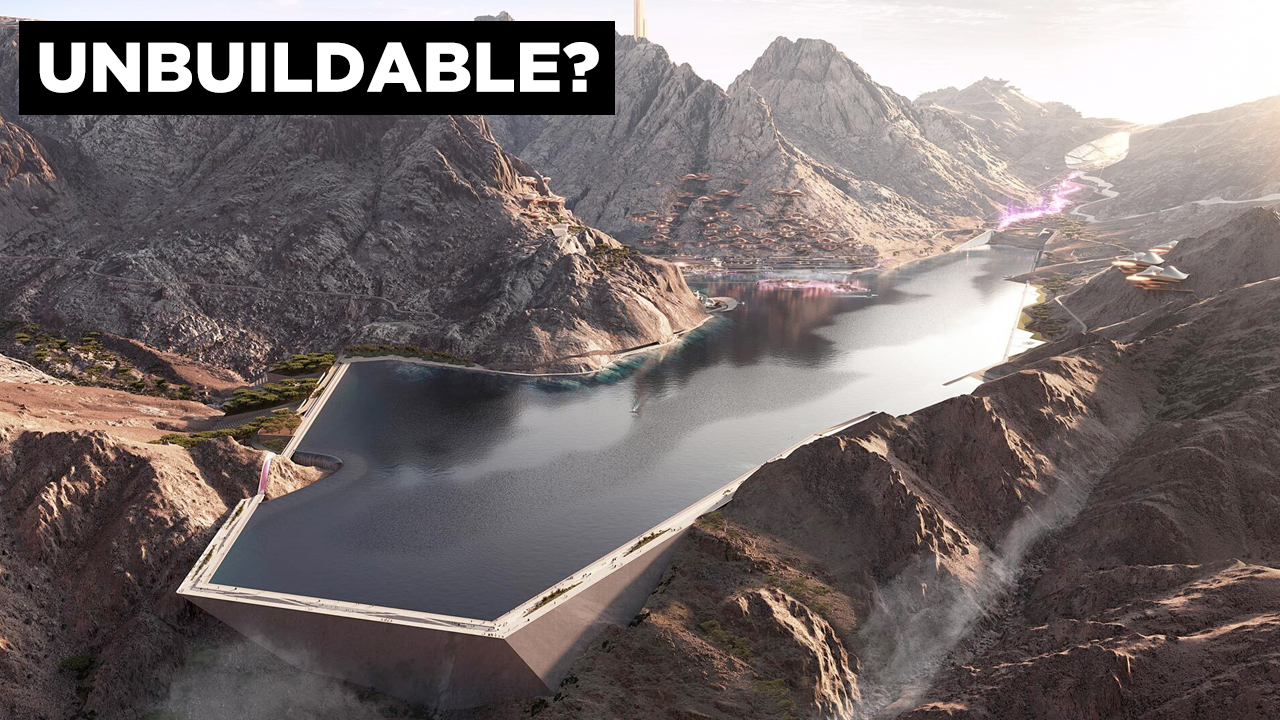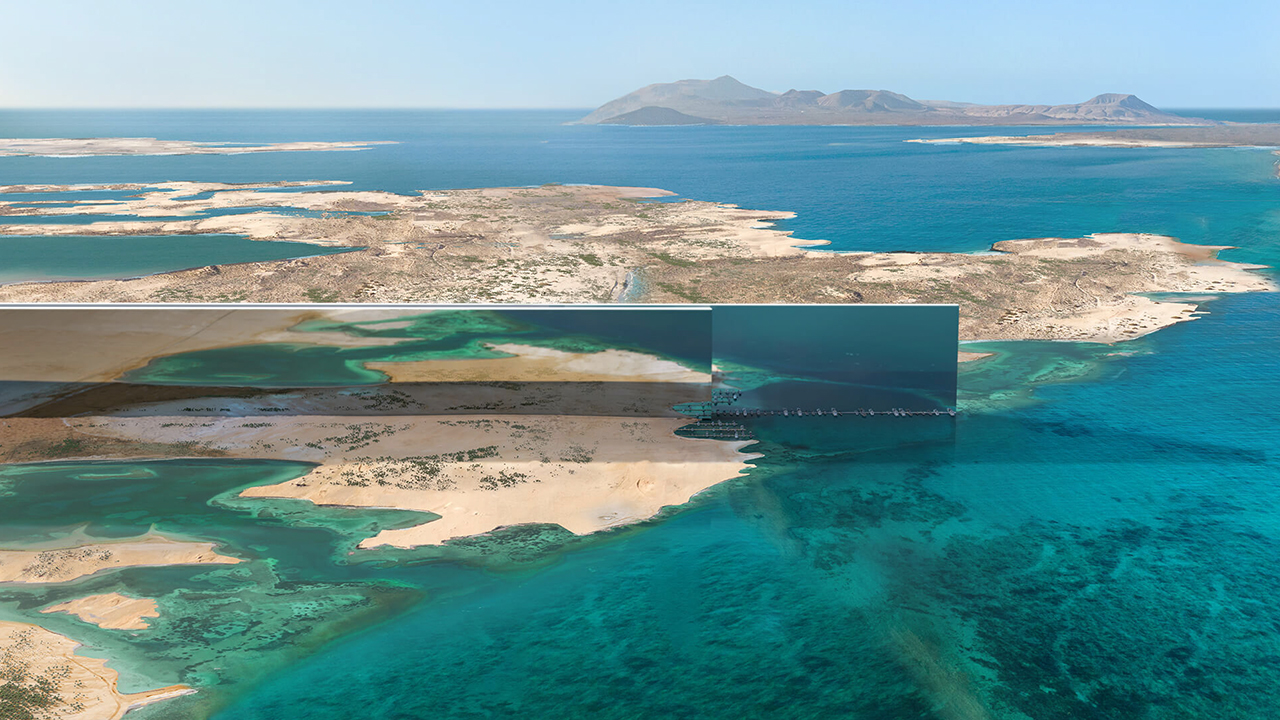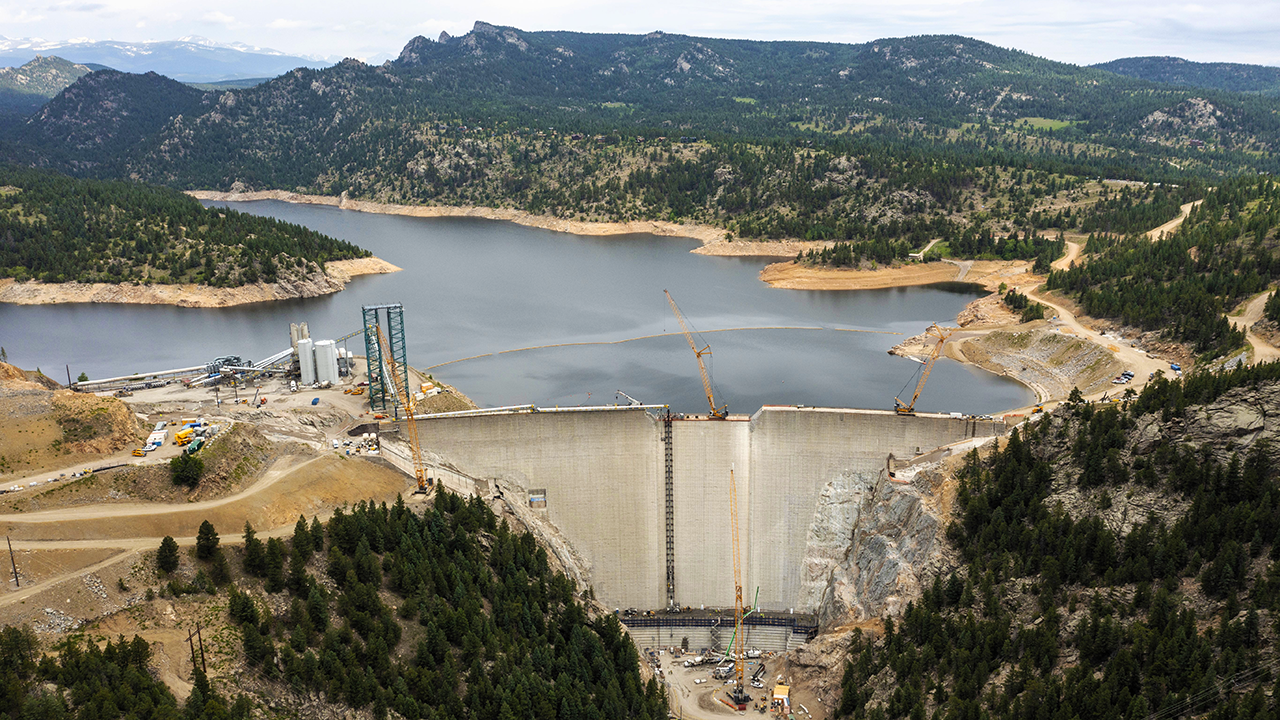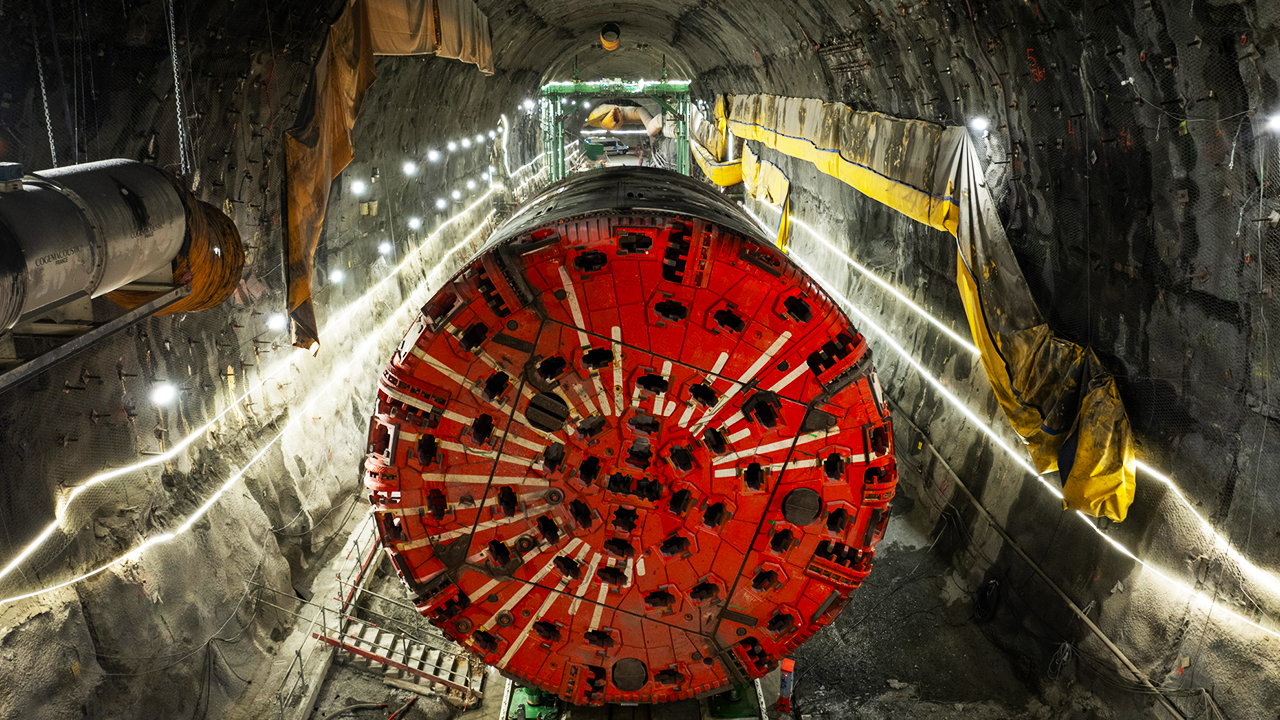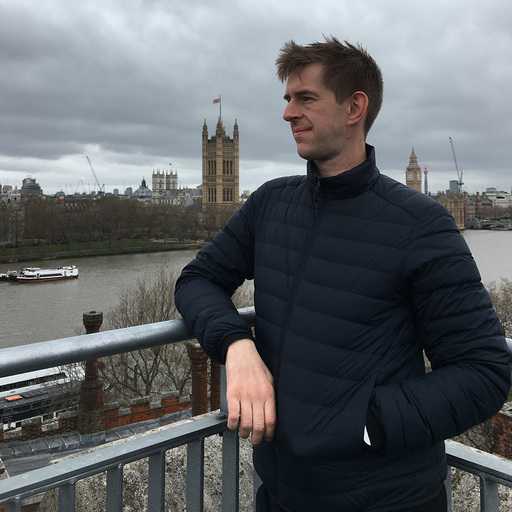Why Bhutan is Building the Anti Dubai
- Youtube Views 3,385,152 VIDEO VIEWS
Video narrated and hosted by Fred Mills.
In the Himalayan kingdom of Bhutan, happiness is more than an aspiration—it is enshrined in the constitution. The country is famous for measuring progress through “Gross National Happiness” (GNH), prioritising spiritual well-being, cultural preservation, good governance and environmental conservation over economic growth.
Yet despite this reputation for contentment and careful stewardship, Bhutan is facing a demographic challenge. Many young people are leaving for opportunities abroad and often do not return—a trend described by some officials as an existential crisis for the nation.
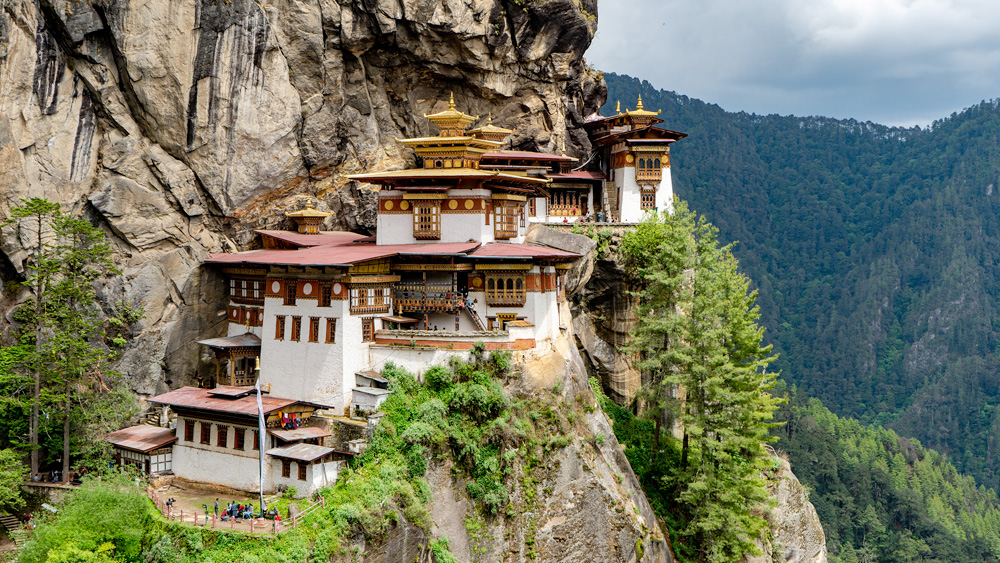
Above: Bhutan is a country steeped in tradition.
In response, Bhutan’s King Jigme Khesar Namgyel Wangchuck has announced an ambitious plan: the creation of Gelephu Mindfulness City (GMC), a vast new urban project designed to provide jobs, foster innovation, and offer a sustainable, Bhutanese model of modern development.
Bhutan has long taken a cautious approach to development. The country restricted tourism until the 1970s, introduced television only in 1999, and maintains strict environmental protections that require 60% of its land to remain forested. Abattoirs are banned, fishing is largely prohibited, and even in the capital, traditional architecture remains the norm.
This conservatism has helped preserve Bhutan’s culture and environment, but it has also constrained economic diversification. Much of the economy is still agrarian, and employment opportunities for an increasingly educated younger generation remain limited.
“Bhutanese are talented, educated and sincere,” said Dr Lotay Tshering, governor of the planned city. “But given the fast-changing world, they are also expecting high-paying jobs.”
Gelephu Mindfulness City is Bhutan’s answer. Unveiled in December 2023, it is set to cover an area comparable to Hong Kong and will be governed as a self-administered economic zone.
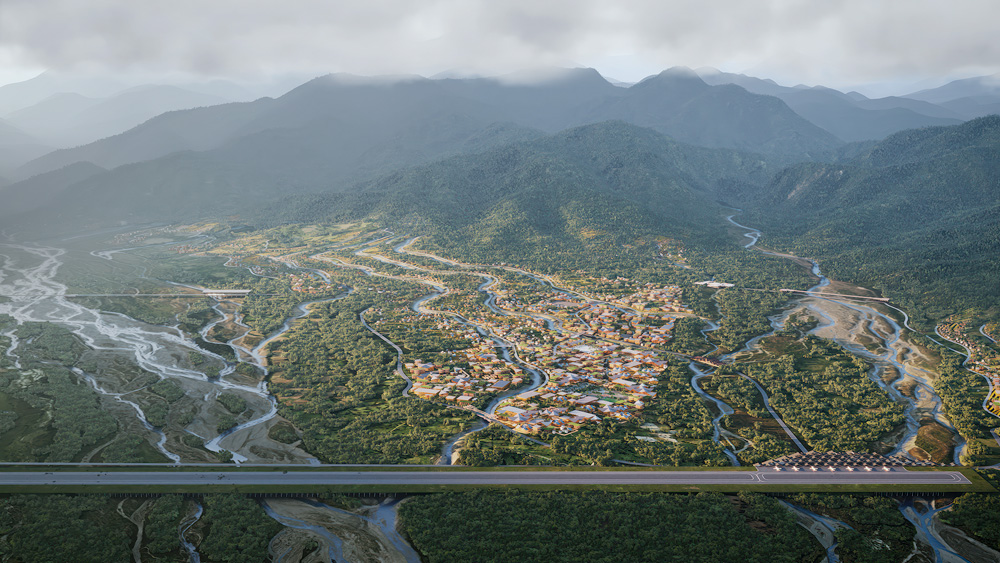
Above: A masterplan of Gelephu Mindfulness City. Courtesy BIG / GMC.
Unlike many global “new city” projects, often characterised by skyscrapers and luxury developments, Gelephu’s vision is shaped by Buddhist values. Instead of high-rise towers, no building will exceed six storeys—a deliberate choice to limit the use of carbon-intensive concrete and steel. The design prioritises harmony with nature, aiming to preserve the area’s rivers, forests and wildlife.
The city will consist of a network of towns linked by striking bridges that serve both symbolic and practical functions. Some bridges will house temples and medical centres, while the largest will contain an international airport constructed over a flowing river—designed so the water and fish below remain undisturbed.
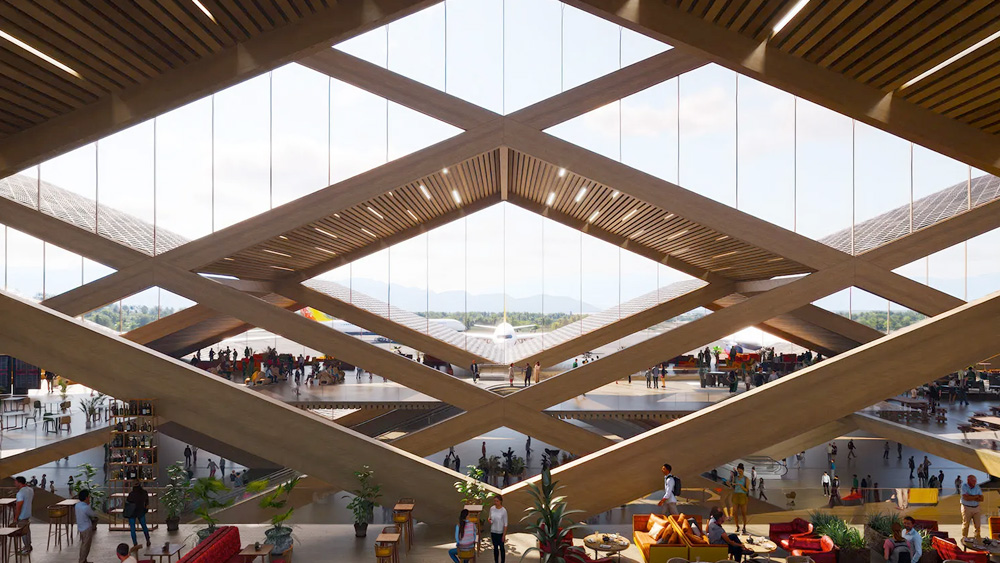
Above: Gelephu's international airport. Courtesy BIG / GMC.
“The river will continue to flow and the fishes in that river will not even realise that the airport is built over their homes,” Dr Tshering said.
Much of the city’s architecture draws inspiration from traditional Bhutanese structures, such as dzongs—fortified monasteries built in strategic locations. The airport terminal will use colourful glulam beams referencing “kachen”, Bhutanese decorated columns, while also offering modular construction to expand as demand grows.
Interiors will feature courtyards and trees that bring the surrounding jungle canopy indoors, offering passengers a restful environment in keeping with Bhutan’s emphasis on mindfulness.
Beyond the airport, another major structure will be a hydroelectric dam incorporating a temple in its centre. Its stepped design is inspired by India’s ancient stepwells. Bhutan already relies heavily on hydropower—about 99% of its electricity comes from renewable sources—making it one of the few carbon-negative countries in the world.
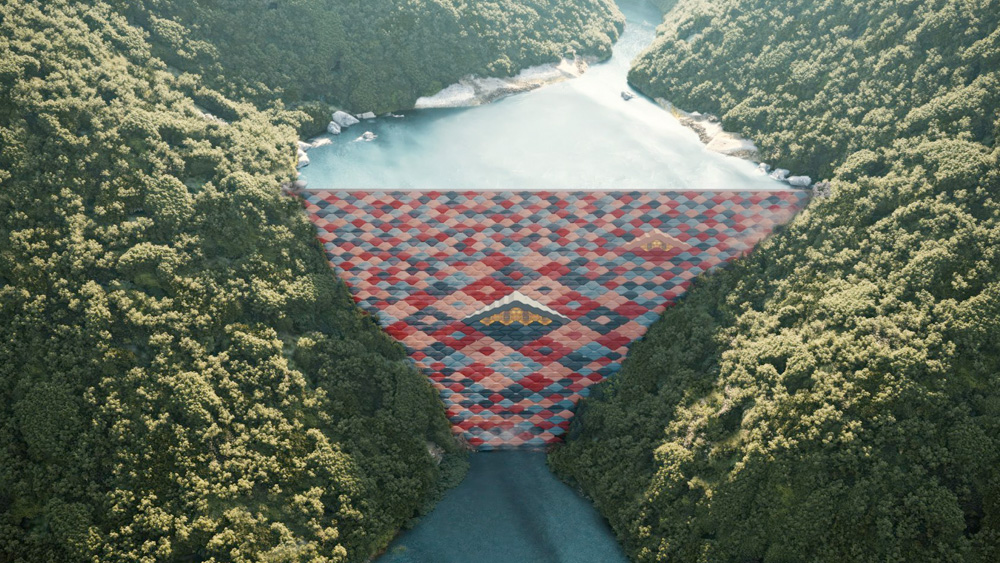
Above: Gelephu's showpiece dam. Courtesy BIG / GMC.
Gelephu is being planned with significant attention to environmental risk. Located at the foot of the Himalayas, the region is prone to flooding during the monsoon. Instead of building extensive drainage systems lined with concrete, designers plan to create agricultural buffer zones of paddy fields around rivers. These fields will absorb excess water, effectively turning the city into a sponge during heavy rains.
Permeable paving, green corridors, and extensive landscaping will further reduce the need for hard infrastructure, aiming to minimise the city’s environmental footprint.
Construction of the city’s first major project—the airport—is intended to be a symbol of national unity. According to Dr Tshering, Bhutan’s king has even pledged that he and his children will contribute physical labour. Ordinary citizens, including farmers and civil servants, have expressed a willingness to volunteer their time and resources to support the work.
Still, the scale and technical complexity of the project poses challenges for a small country with limited engineering capacity. Dr Tshering acknowledged that Bhutan would rely on global expertise, with the goal that Bhutanese professionals would learn from these collaborations and one day advise on similar projects abroad.
“These are very demanding, unique projects,” he said. “We are not good enough yet. But we are willing to open ourselves to get global experts and work with them side by side.”
Gelephu Mindfulness City is expected to take around a decade to complete. Bhutanese officials have stressed that the timeline is less important than ensuring the city stays true to its values of sustainability, cultural preservation and well-being.
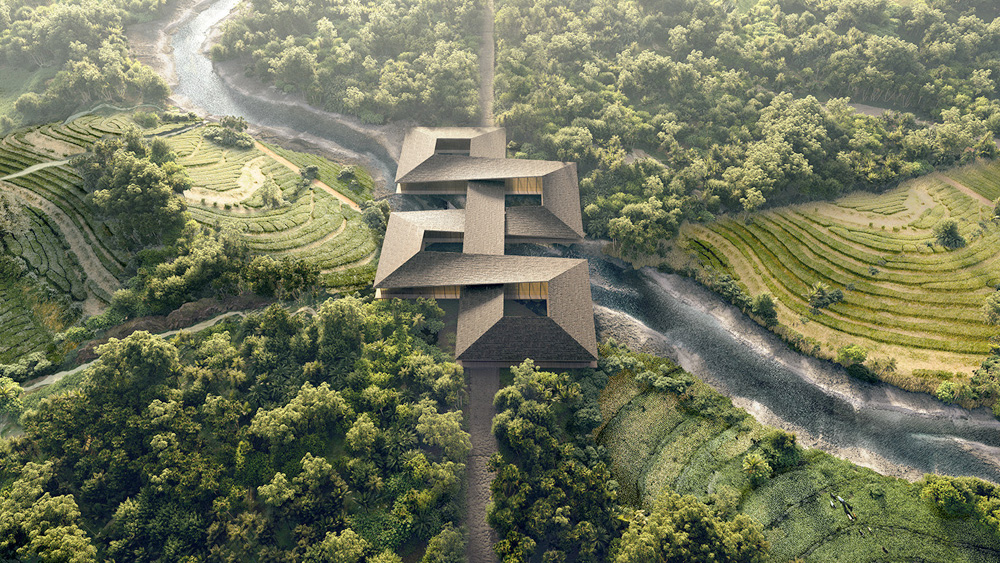
Above: Gelephu's showpiece dam. Courtesy BIG / GMC.
The project represents a striking attempt to reconcile modern economic development with Bhutan’s long-standing commitment to Gross National Happiness. For a country renowned for spiritual values and environmental stewardship, Gelephu is a test of whether those ideals can be translated into an urban plan that meets the needs of its people without sacrificing what makes Bhutan unique.
As Bhutan opens a new chapter in its development, the rest of the world will be watching—and perhaps learning—from its attempt to build not just a city, but a different kind of future.
Additional footage and images courtesy of BIG, Gelephu Mindfulness City, Jamyang Loden Diaries.
We welcome you sharing our content to inspire others, but please be nice and play by our rules.
